
Lotus took centre stage at this year’s Goodwood Festival Of Speed, literally in the shape of the magnificent Gerry Judah sculpture on the front lawn before Goodwood House, and displayed a wide selection of cars around the paddock and exhibition area from across the marque’s long and illustrious history.
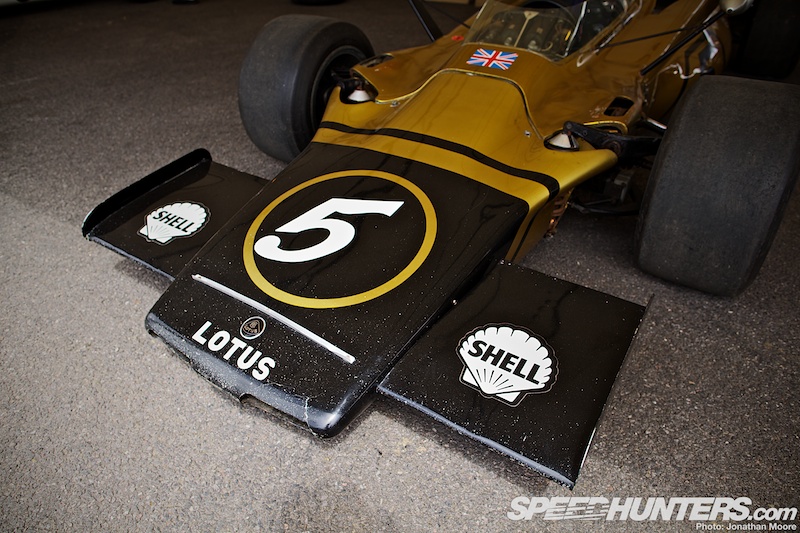
Known during their heyday as the English Ferrari, Lotus were legendary innovators under the leadership of their enigmatic team leader, Colin Chapman. The Lotus brand resonates with any petrolhead, in spite of the brand’s troubles over the last couple of decades. There’s something special about a Lotus: they have soul.
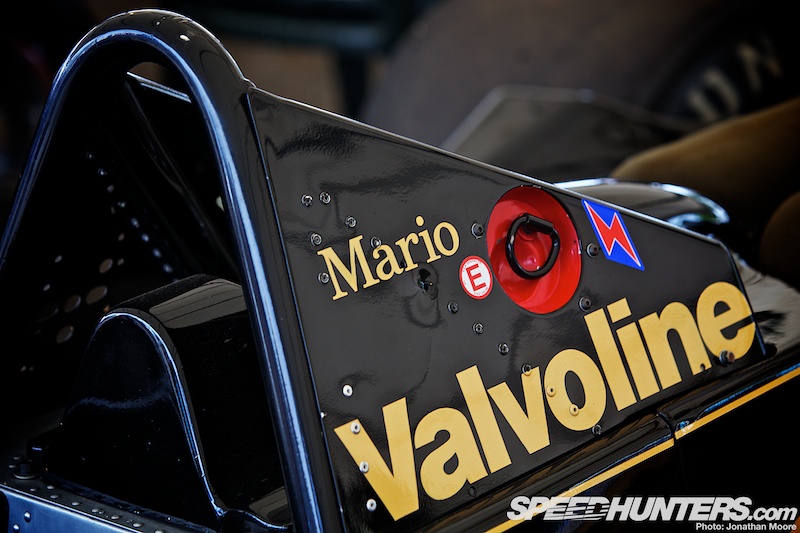
Success breeds success: many of the F1 legends drove for Lotus during its decades at the top, and it was only as the company stumbled and fell in the mid-90s that the great name lost its sheen.
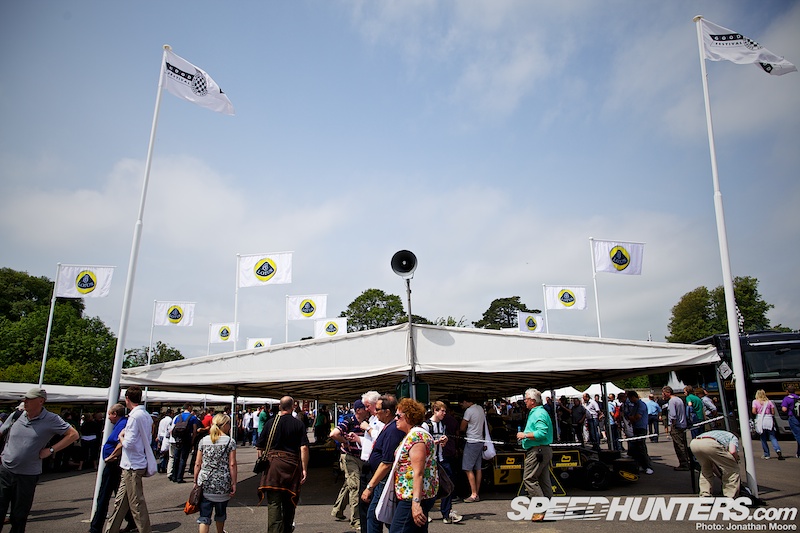
The majority of Lotus cars at Goodwood were to be found in the main paddock area: the lines of open-sided tents that housed the larger part of the magnificent collection of cars that take to the hill over the Festival weekend. Lotus took up an entire tented wing and more, with a long rank of Formula 1 cars down one row backed by historic single-seaters.
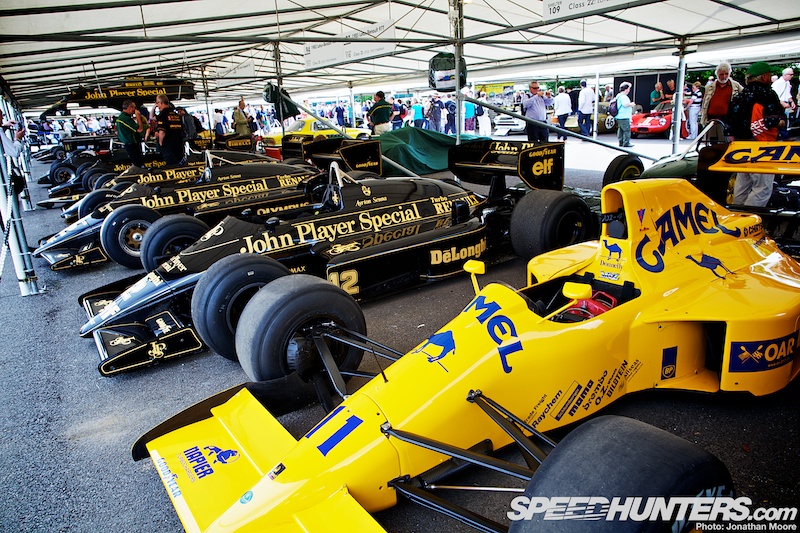
Here you could find a pair of cars each from Nigel Mansell (a 1982 Lotus-Cosworth 92 and 1983 Lotus-Renault 94T), Ayrton Senna (1985 Lotus-Renault 97T and Lotus-Renault 98T from 1986) and Mario Andretti (Lotus-Cosworth 77 and 79 from 1976 and 1978 respectively), plus the 1990 Lotus-Lamborghini 102 driven by Martin Donnelly. The latter represented a team in torment: the V12 Lamborghini was heavy and unreliable and the team scored its least number of points in the World Championship for 32 years.

The iconic John Player Specials of the ’80s were where it was at: a livery that defined a team and a team that defined Formula 1 of the period.
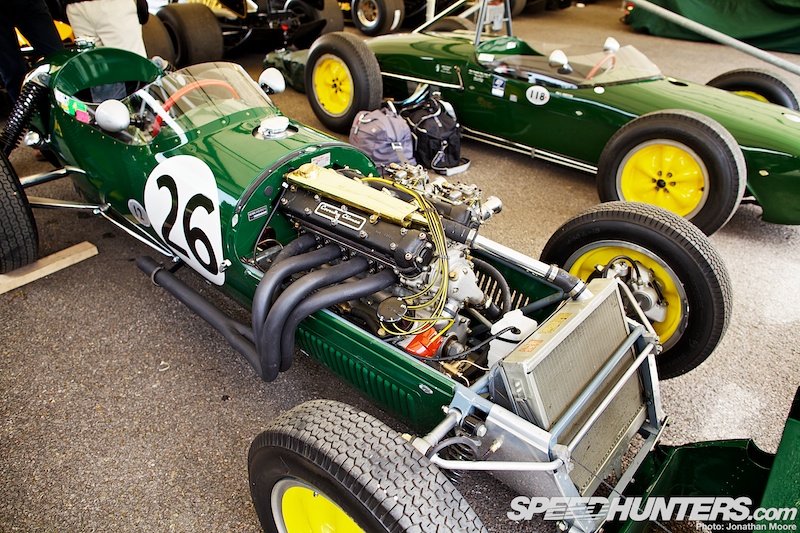
Winding back the clock, Lotus had run in a variant of British Racing Green when it first started racing in the 1950s: the Lotus-Climax 12 was Chapman’s first entry into single-seater racing. It set out Lotus’ stall: a dedication to making cars as lightweight as possible and maximising modern materials (the wheels on the 12 were magnesium disks to decrease weight and increase strength) to get the most out of small (and therefore light) engines.
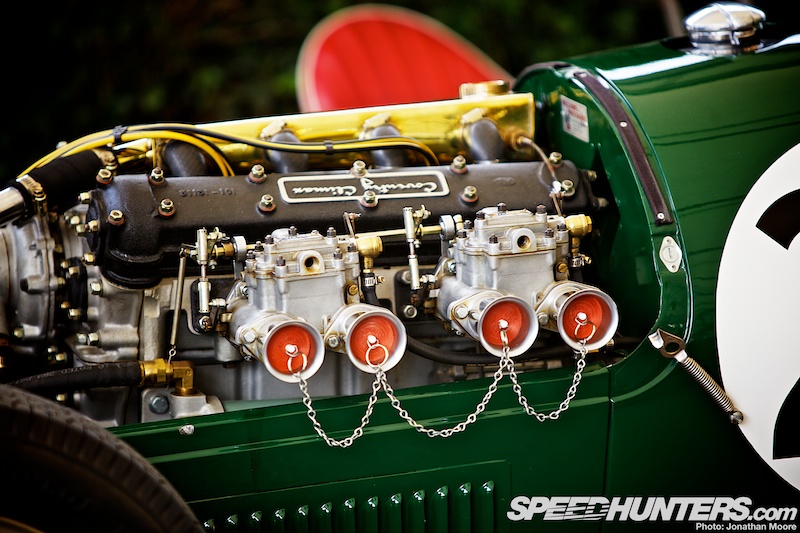
The 12 used the then-ubiquitous Coventry Climax racing engine (as did the 18 that was parked up in the neighbouring bay). The Climax was a DOHC four-cylinder adapted from, of all things, a fire-engine pump, and powered many early Lotus cars. These nimble racers allowed Chapman to hone his skills and refine the principles that would be stamped on all of his automotive ventures.

The 49 from 1967 was where the next phase of Lotus’ success started, with the Ford partnership and the introduction of the DFV. With its hugely-wide stance and profiled cigar-shaped body mounted directly to the stressed-member engine block, on track the 49 was a blur of power slides and opposite lock. These cars were seriously hardcore racers.
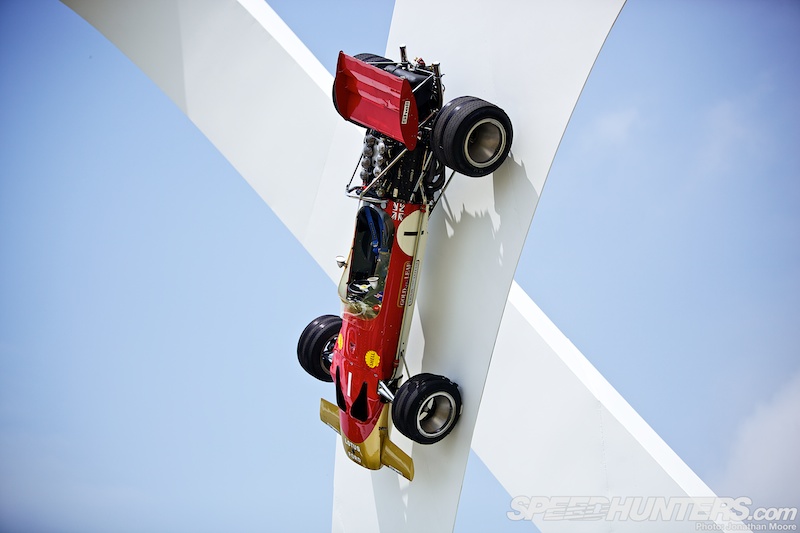
The 49 also straddled two important eras of Formula 1, with a pair of new concepts hitting the championship at the same time: aerodynamics and commercial sponsorship. No more the traditional national racing colours; the path was set for the modern, advertising-supported era of racing. Lotus partnered with Gold Leaf to create the first of two iconic Lotus liveries. The red and gold would soon be replaced by black and gold – but with both colour schemes having such a strong impact that they still adorn Lotus cars of modern times.
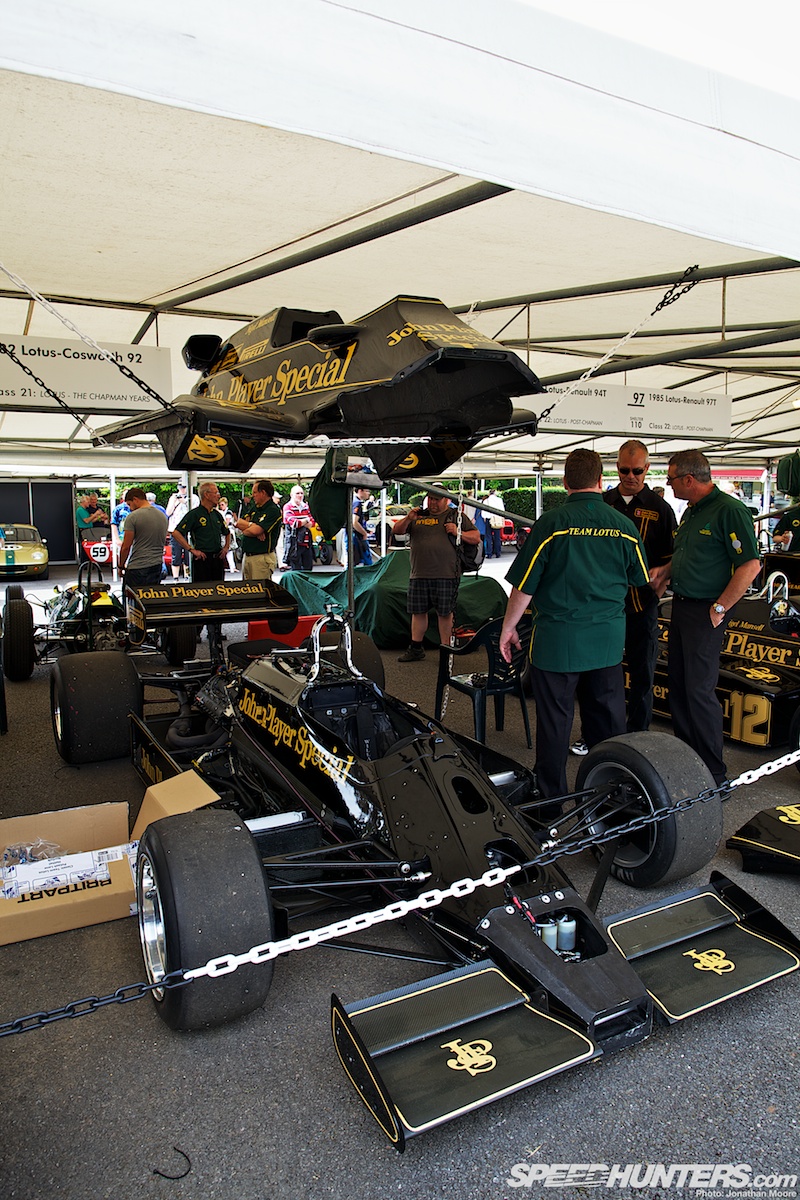
John Player Special support was adopted on the introduction of the legendary Lotus 72, and became the de facto livery on Lotus cars for the next dozen years. The Lotus 92 was the final Lotus to be powered by the Cosworth DFV and also one of the last cars created under Chapman (there was also the turbo-powered sister to the 92, the 93T): he passed away without seeing the car race.
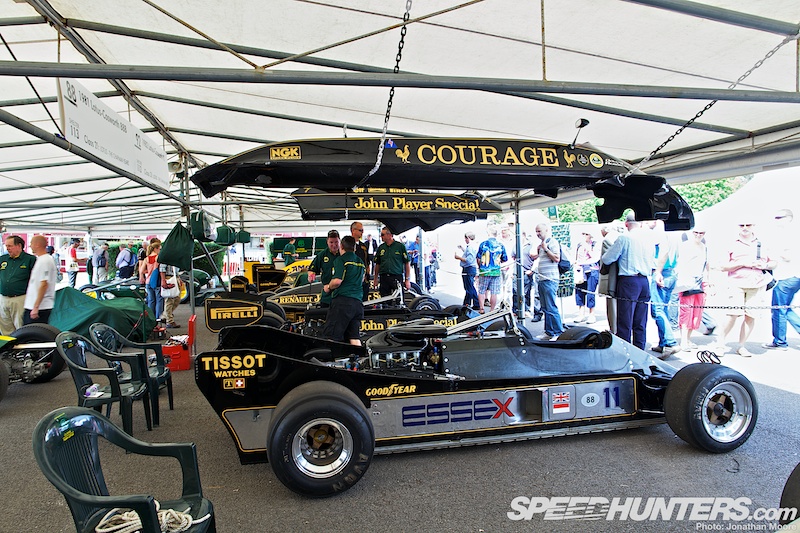
Always on the cutting edge of technology, almost every Lotus F1 car could claim to represent some new technology path, some of which were barely allowed to take to the track before being banned and others not even making it that far. These categories included the 1968 wedge-shaped Gold Leaf 58 and this twin-chassis Lotus 88B.

The 1981 88B was a development of the prototype blue, Essex-sponsored Lotus 86: both cars featured a chassis within a chassis, with the driver’s tub separated from the structure holding the bodywork and wings. This made the car into one big ground effect system, rather than relying on independent front and rear wings.
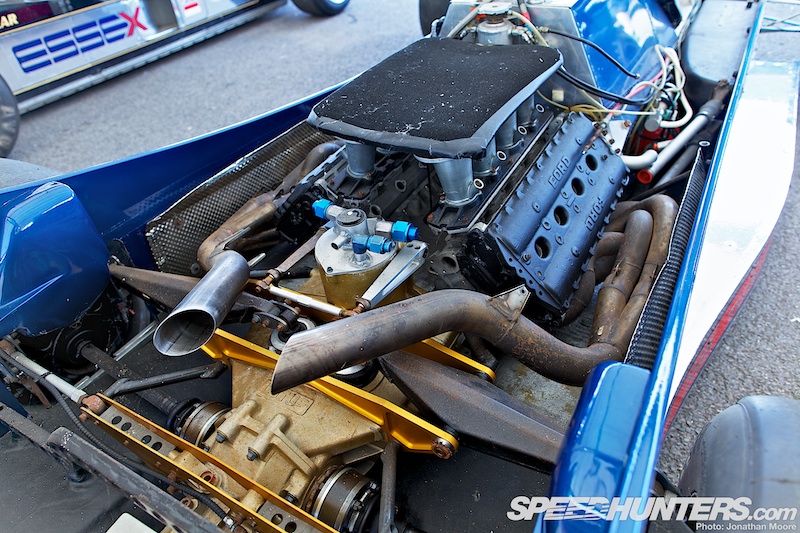
The trusty Cosworth DFV was still in the back of these low-slung rocketships and the carbon fibre extensively used (it’s one of the first cars to use the material, along with the McLaren MP4/1) gave the car a dry weight of just 585kg.
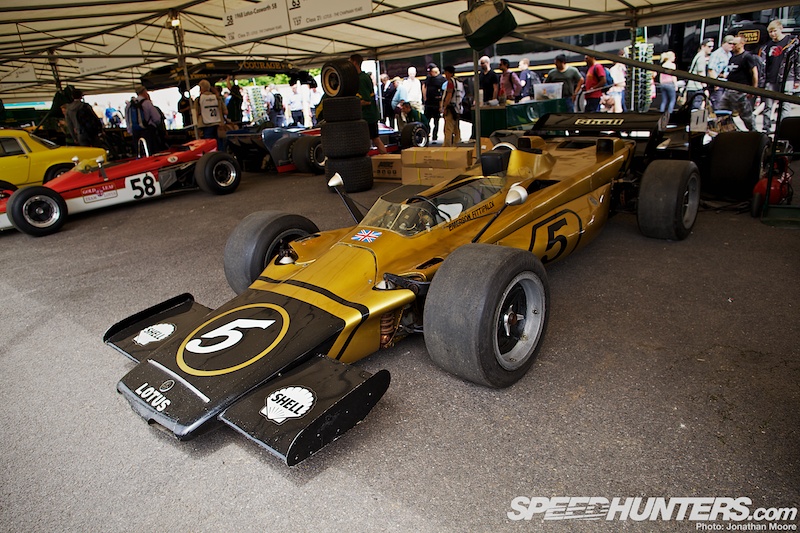
Lotus developed the gas-turbine-powered Pratt & Whitney 56B to be a Formula 1 contender. It was based on their Indy challenger and was effective in the wet thanks to its four-wheel-drive system, but the turbine was heavy and unresponsive and rendered the car uncompetitive.
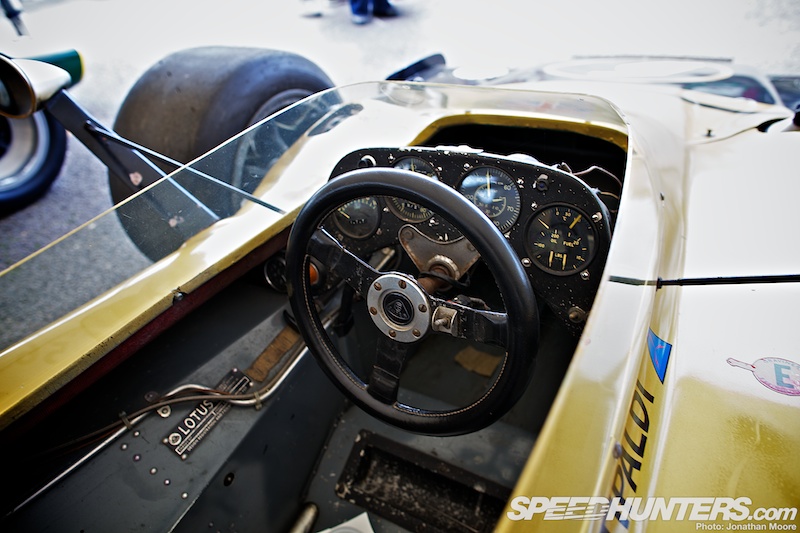
Emerson Fittipaldi tried running the 56B at two non-championship rounds in 1971: at Brands Hatch the car ran away during the wet qualifying session but quickly dropped out of contention in a dry race; it retired after just three laps with suspension failure at a following race at Silverstone. But at the Italian Grand Prix Emmo again ran the 56B and managed to finish eighth, though a lap down on the leaders.

Although the turbine engine wasn’t successful and wouldn’t be used again, a number of concepts utilised on the 56B were important, especially the aerodynamics: the shovel-shaped nose would be re-used on the 72.
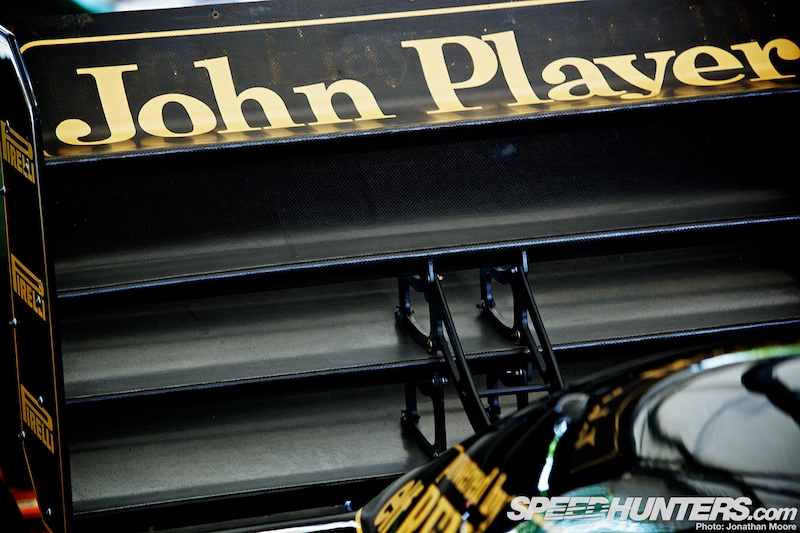
The triple-plane rear wing on 1983’s 94T was one of a number of improvements out into effect as part of an effort to turn round what had been an uncompetitive couple of years for the Lotus team. The 94T and its Renault Gordini V6 turbo proved the starting point for a new line of successful Lotus F1 cars.
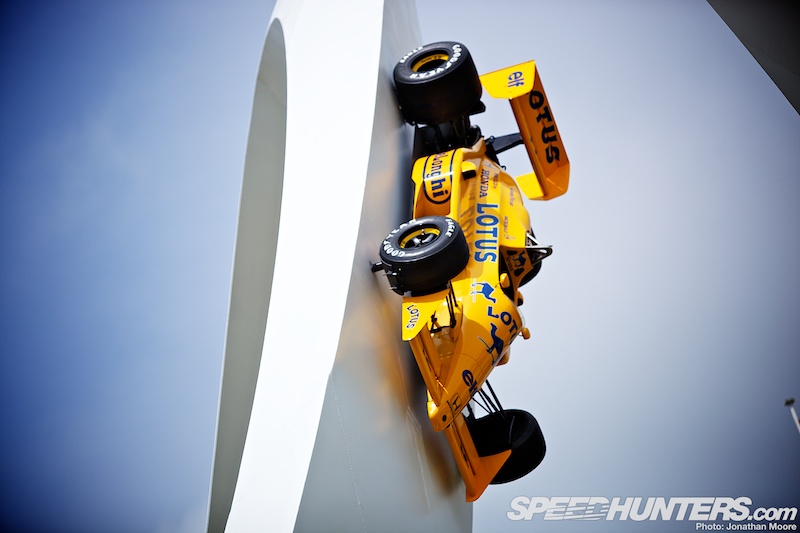
That line would include the addition of Senna to Lotus’ driving strength: his 99T of 1987 was one of five Lotus hanging from the sculptural frame: it was joined by another of Andretti’s 79s, Jim Clark’s 32B, Graham Hill’s 49 and Ronnie Peterson’s Lotus 72.
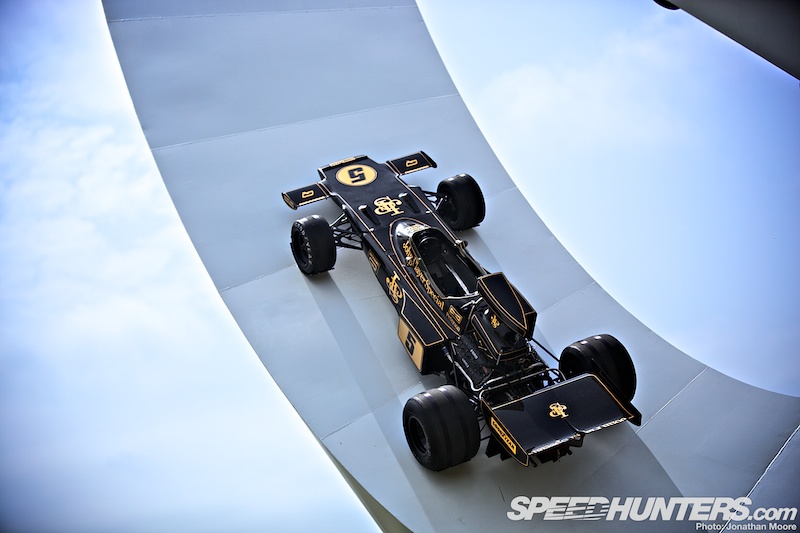
The car that really resonates with me is that 72. Images of this incredibly powerful F1 car hooning around tracks, at the edge of adhesion and barely controlled by its famous drivers still fill me with joy. It was the poster car on my wall as a young child, and I still have an old toy model of one sitting on a shelf.

Tiny front tyres, enormous rears, that shape, the bark of the DFV… Raw excitement. More so when driven by period legend Jacky Ickx.
A little taster of a 72 in period.
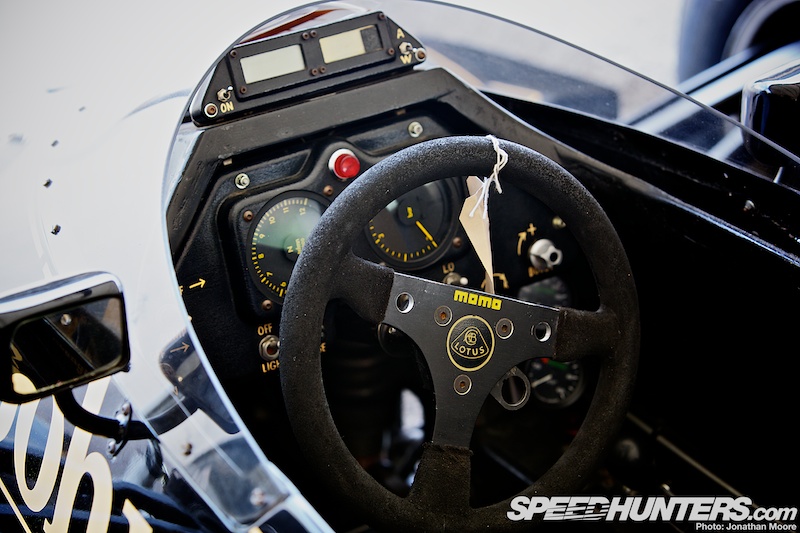
Compared to modern F1 cars the racers of the ’80s look incredibly simple in their construction and presentation, even though each represents the pinnacle in technological innovation for their period. With single-line LED read-outs, a brake bias adjuster, some basic switches, a steering wheel and a gear lever, there wasn’t much for the driver to do except drive the car to the car to the absolute limit. No distractions, no driver aids, no fly-by-wire, no complicated electronics. Just your feet and hands to control an enormously powerful bronco of a car, the way it should be.
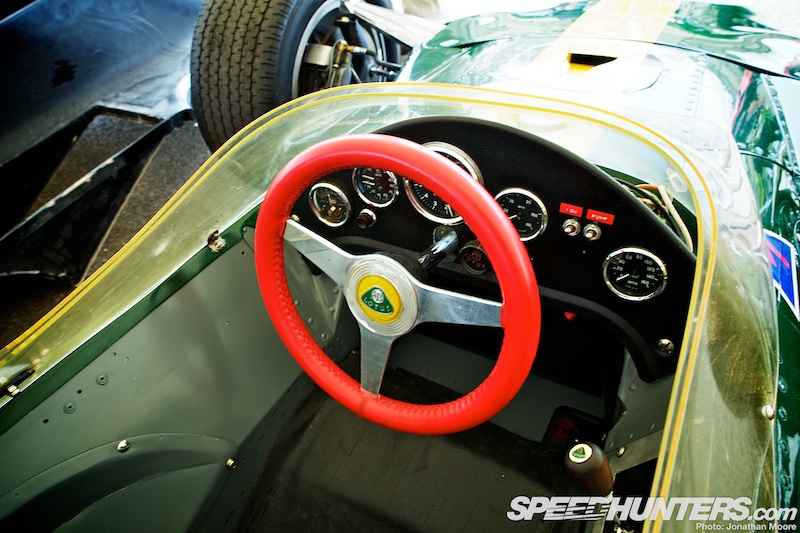
Except for the LED display, there’s not a huge difference between the cockpit of Senna’s 97T and Clark’s 49: they might have radically different exteriors and handling traits, but you get the feeling that the driving experience would be similar: visceral and involved. None of the computer-game myriad of dials and switches that you see in a modern F1 car.
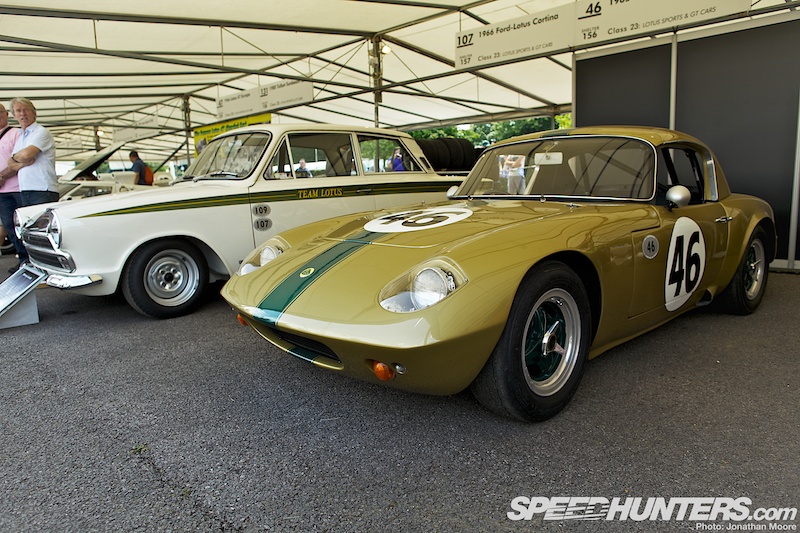
A row of Lotus sportscars and tourers faced off the single-seaters. Star of the show was the backbone steel chassis and glass-fibre bodied Elan, celebrating its 50th birthday and represented by this 1965 26R.
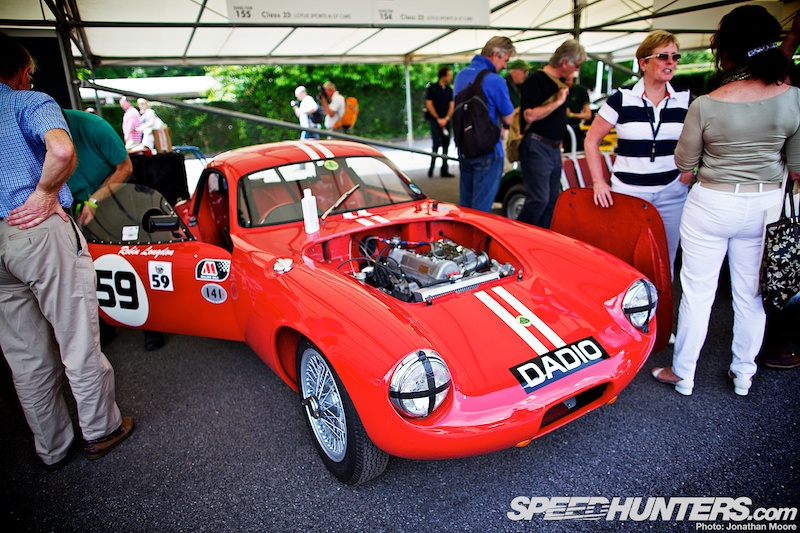
The Elite had preceded the Elan: its innovation was the stressed-skin unibody it used, a fibreglass monocoque and steel subframe at its heart. This allowed the Elite’s low weight target to be achieved – just 503kg – but the compromise was the fragile nature of the GRP used at the time not always keeping up with the stresses put onto it.
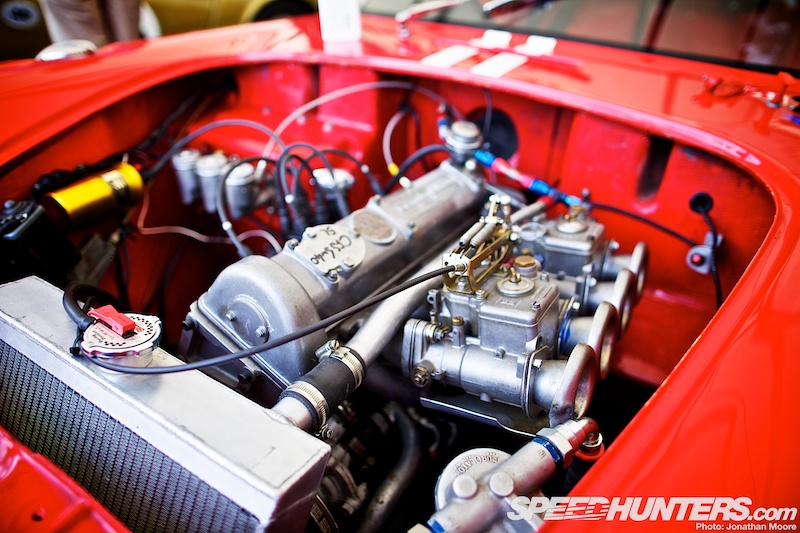
This immaculate 1960 model mounted a 105hp 1.2-litre Coventry Climax engine, and Elites won their class at Le Mans six times.
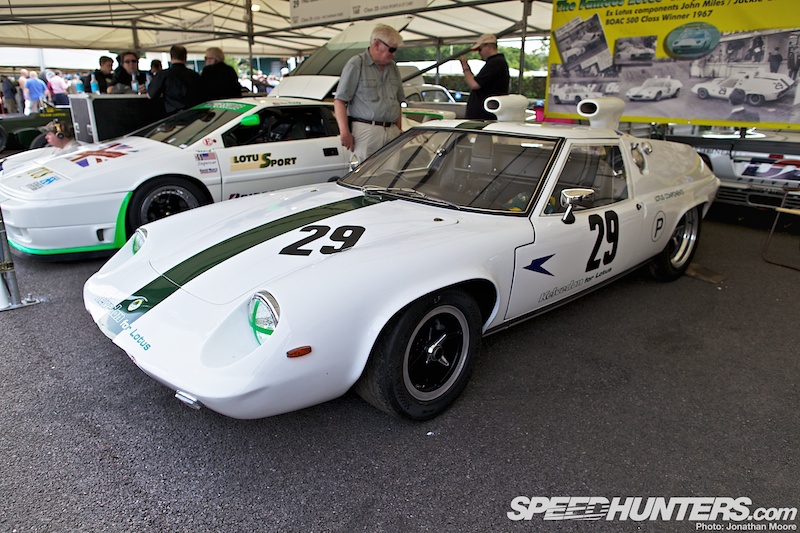
Chapman replaced the original Renault unit in its Europa with a Cosworth to make the Group 4-specification Type 47 ‘Snorkel Car’, which had the twin intakes mounted to help with cooling the new engine.
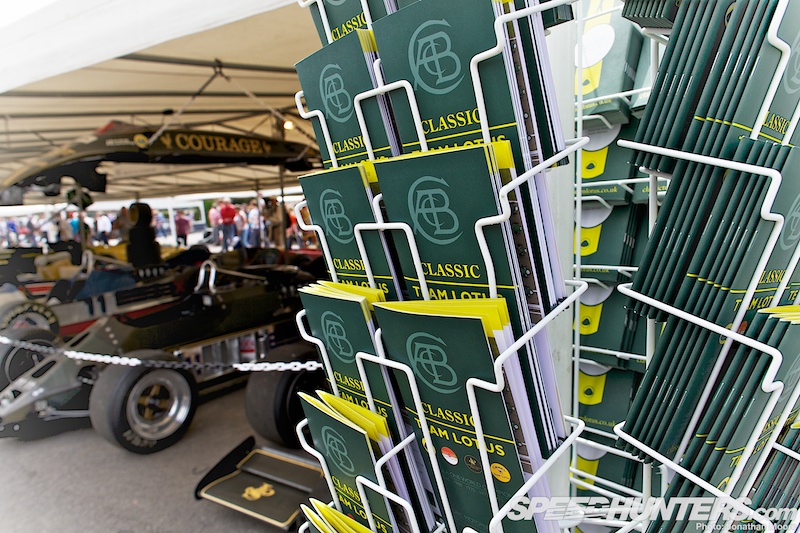
Classic Team Lotus, the company run by Clive Chapman – son of Clive – were responsible for bringing a large number of the F1 cars along, and a team of their mechanics were on hand to prepare and maintain the fleet of cars.
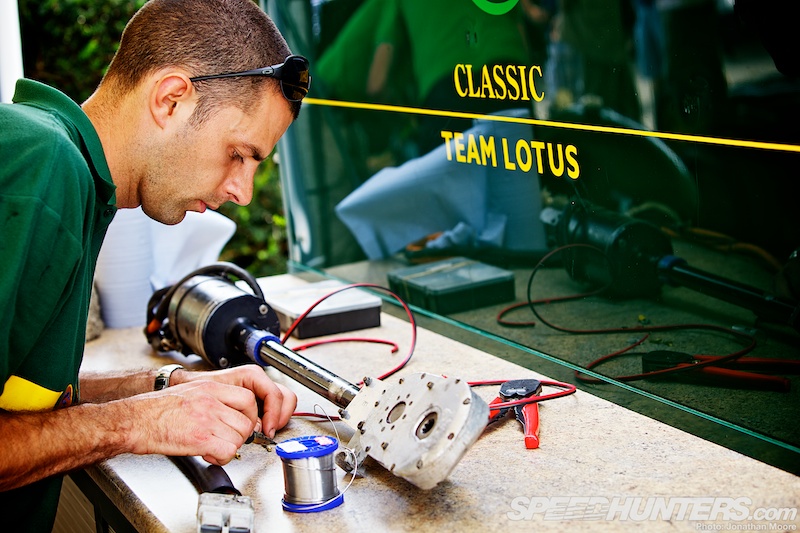
Established in 1992, the company deploy bespoke engineering skills to keep the cars on the track, plus restore and maintain customer cars.

Classic Team Lotus had brought along their prototype IndyCar racer from 1986. The 96T was the team’s final attempt at the US open-wheel scene until the modern incarnation of the company’s most recent engine supply deal, and a project sunk by CART’s hostility to a works-supported entry into the series. As usual, in spite of it not racing the car proved a useful test-bed for new techniques that would then be used on future Lotus racecars – in this case using a new aluminium-foil honeycomb/carbon-Kevlar sandwich to create the chassis.
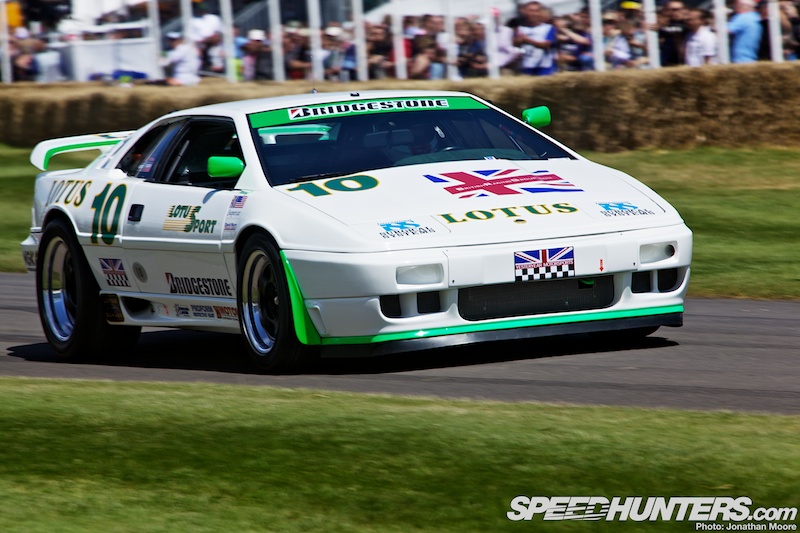
A more rewarding foray into the USA was with the Esprit X180R in 1991. Five chassis were built and shipped to the States to compete in the IMSA GTP-supporting IMSA Bridgestone Supercar Championship.
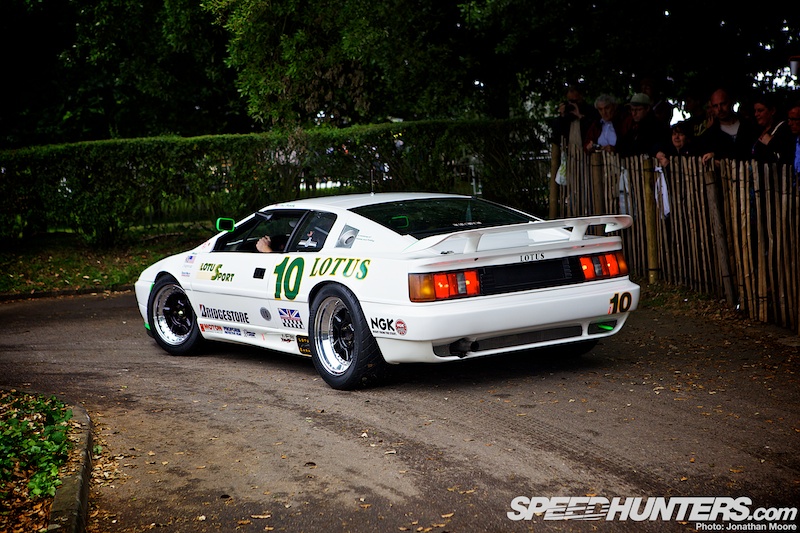
Competing against Corvettes, 911s, Mazda RX-s and Nissan 300ZXs, the Esprits took part in the sprints televised before the main sportscar races. A racing bodykit with a new front splitter and rear wing was fitted to a stock SE, along with suspension tweaks and AP Racing brakes. Yesteryear Motorsports currently own three of the five cars built: they were proudly showing off one of their Esprits to the interested crowds.

The charge-cooled 2.2-litre four-cylinder pumped out over 300hp in race trim, and in its opening season in 1990 X180Rs won four of eight races.
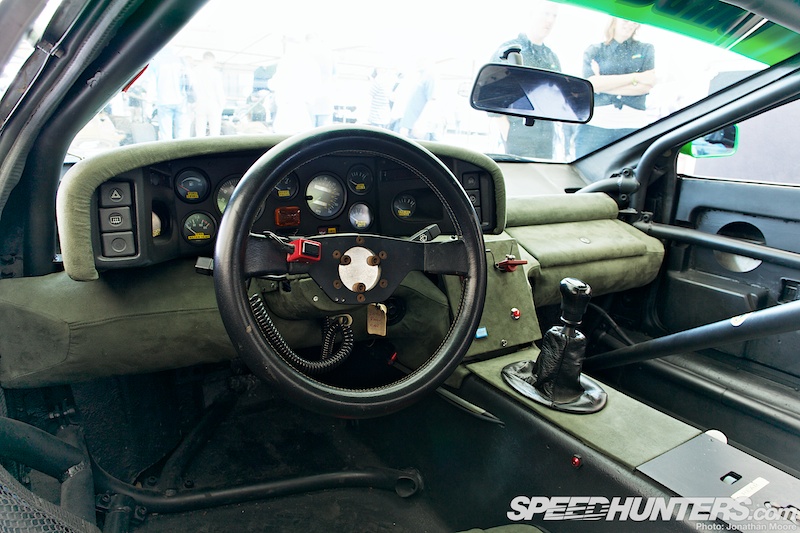
Doc Bundy, who won the 1992 Bridgestone Supercar Championship in an X180R, was back in the driving seat at the Festival Of Speed; latter-day Corvette specialist Andy Pilgrim, David Murry (seen at Le Mans last year in the Robertson Racing Ford GT) and even Paul Newman drove the cars in period.
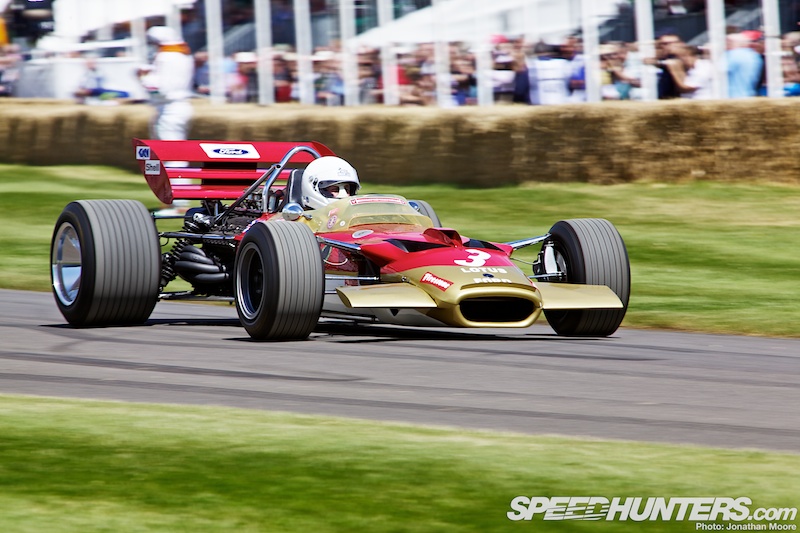
Seeing the cars lined up and accessible is in itself a privilege, but when they take to the hill the feelings go stratospheric. In keeping with the pride of place Lotus were taking at the Festival, they were also given there own dedicated slots each day to wow the crowds lining the course. Here’s the be-winged 49C on its return run back to the paddock.
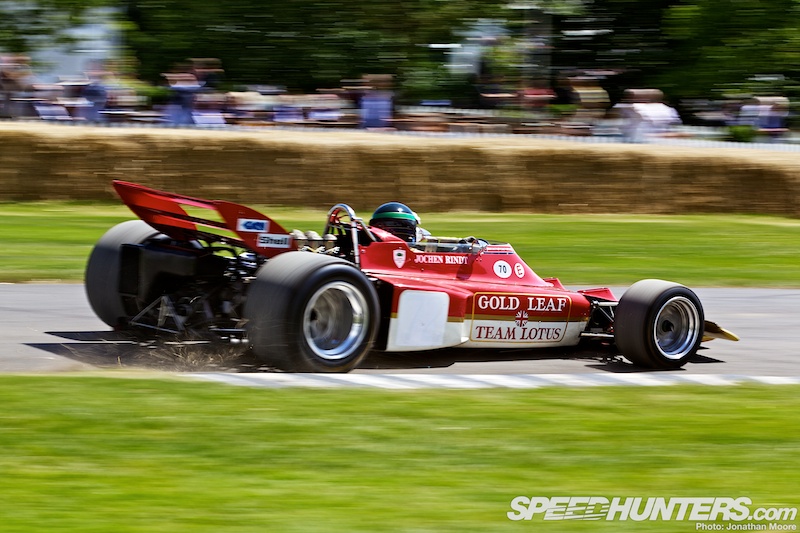
Introduced part-way through the 1970 F1 season, the 72 originally ran out in Gold Leaf colours, continuing the deal started with the 49C it replaced. It introduced sidepod-mounted radiators and advanced aerodynamic principles that allowed developed 72s to continue competing and winning for six years – unparalleled success for a modern F1 car.
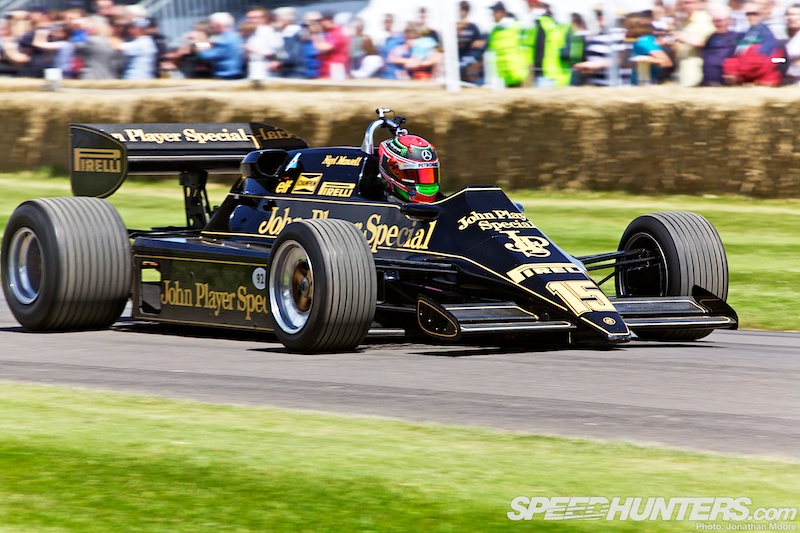
Mansell’s 92 was the last 3-litre V8 Cosworth-powered Lotus, and therefore also the last non-turbo car Lotus raced in F1. He ran the 92 in eight races at the beginning of the 1983 season whilst his team-mate, Elio De Angelis, drove the turbo-powered 93T. Former Red Bull F1-protégée Brendon Hartley (who also competed at Le Mans this year) shared driving duties with ex-Audi LMP1 factory driver Emanuele Pirro.
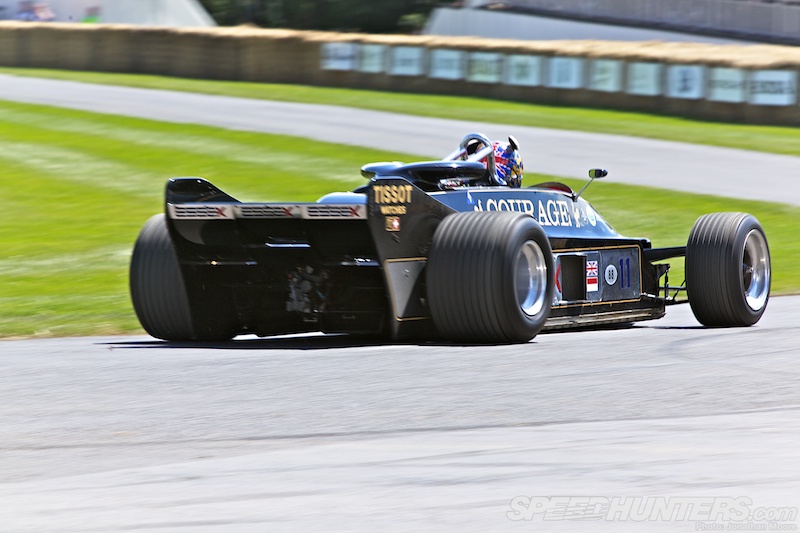
The straight-through lines of the 88B were in stark contrast to all of the other modern-era F1 racers on show: even the current crop of cars have direct aesthetic relation to other racers of the ’80s, but the twin-hull 88B presented a completely different look.
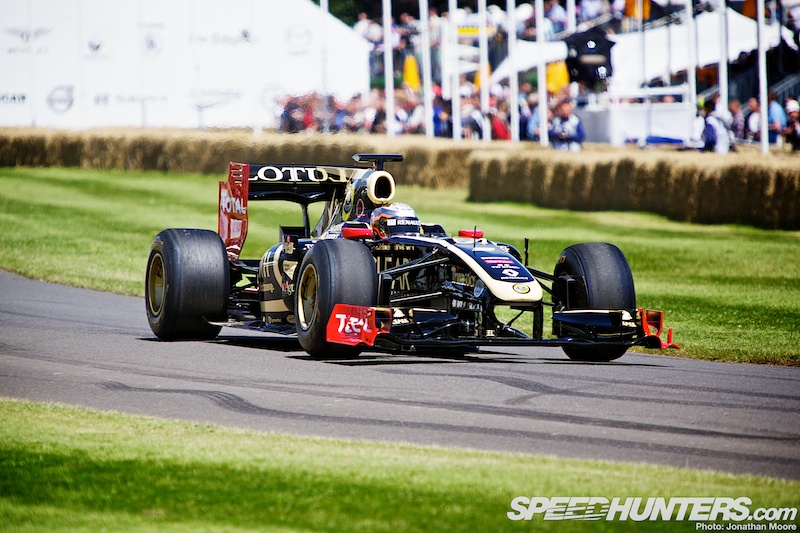
Son-of-Alain Nicolas Prost shared the wheel of the 2011 Lotus-Renault R30 with former Marussia F1 driver Jerome D’Ambrosio: it demonstrates the return of Lotus to the top ranks of Formula 1 – now with less confusion about just who is the Lotus F1 team…
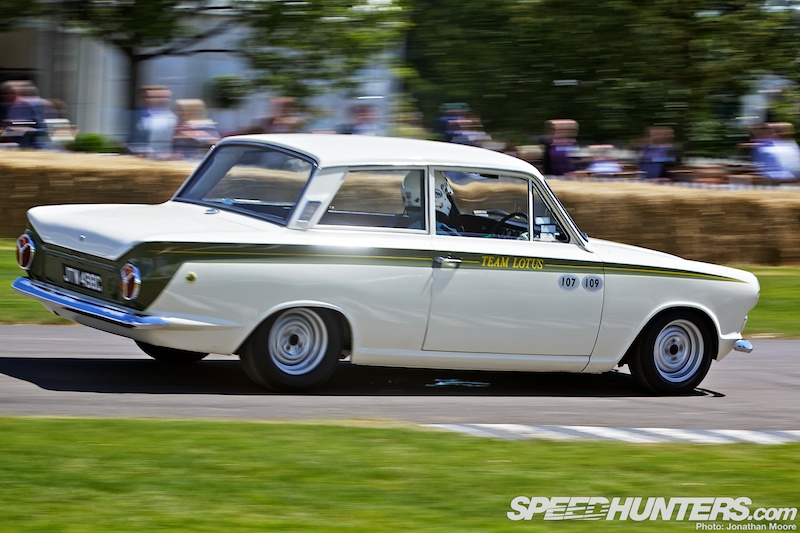
Finally a couple more tin-tops that were taking on the hillclimb course: the Lotus Cortina seems to want to three-wheel even during what’s supposed to be a gentle demonstration…
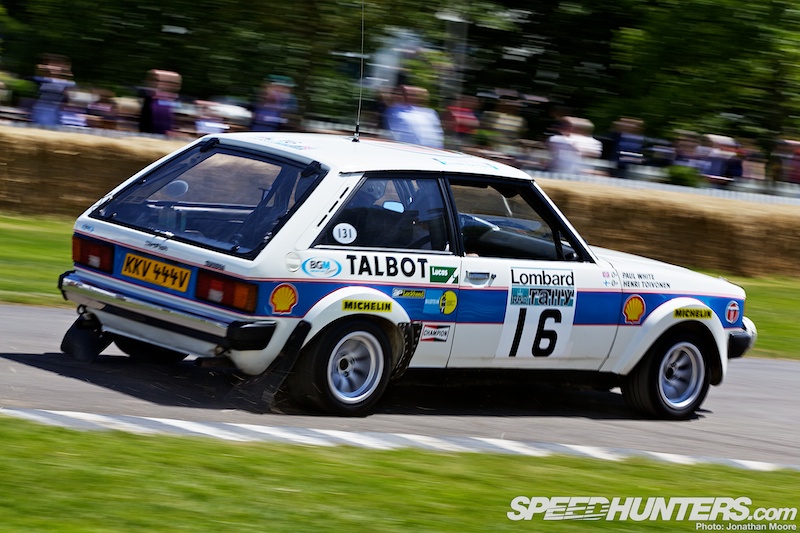
Lotus have had a number of successful collaborations with mainstream manufacturers, such as the Ford Cortina above, with Vauxhall and the Carlton and with Talbot. This is the Talbot Sunbeam Lotus built in 1980, the rally version of the Sunbeam that ran in Group 2. Henri Toivonen won the 1980 RAC Rally in this car, and the Sunbeam Lotus gave Talbot to the World Rally Championship title in 1981.
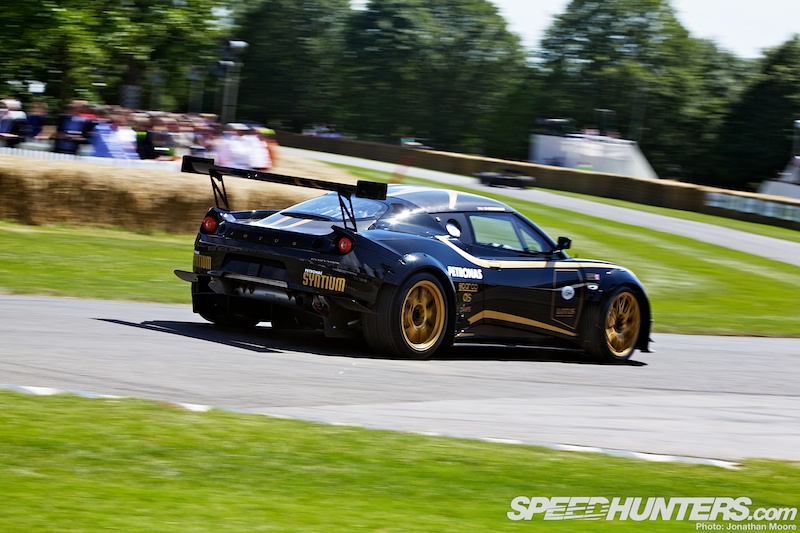
Lotus have made a quiet return to rallying recently, surprisingly with an Exige modified to the new FIA R-GT regulations; that car was bounding up the hill alongside new the new 4-litre V6 GTC-model Evora, which runs to GT4 sportscar rules.
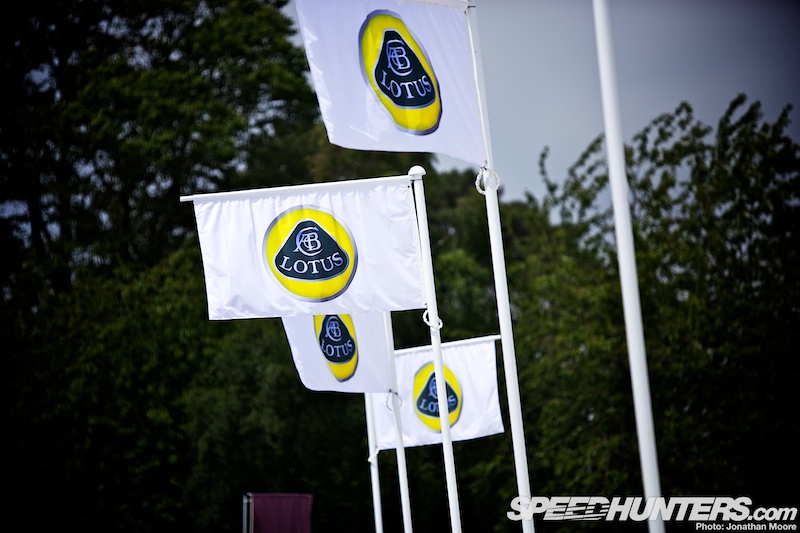
Once again the Lotus flag is flying high: another round of corporate culling has taken place that will hopefully see the company set more realistic goals that can be achieved, rather than their previous attempts to race in every single series on the planet simultaneously. They’re not out of the woods yet, and I’m sure they’d like to see more Lotus cars on the road as much as I would, but the car world is a richer place for Lotus.
Jonathan Moore
Speedhunters at the 2012 Goodwood Festival Of Speed

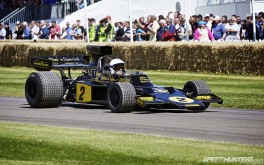
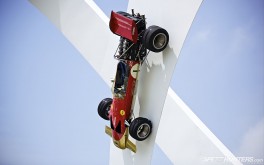
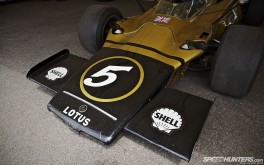
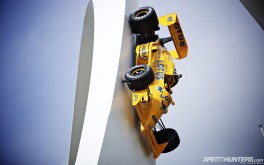
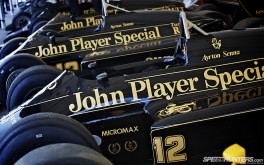
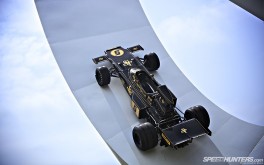
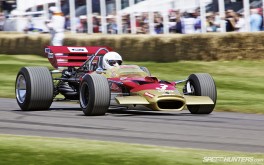
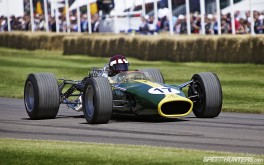





Lotus (Ford) Cortina, one of my all time favorites.
A Henri Toivonen car! I was only born in 1991, but he's my favorite driver, I'd do anything to see that car in person.
love the Cortina
Can we get thiis image in high res pleeease!! http://cdn.dev.speedhunters.com/wp-content/uploads/2012/07/SH-GFOSB-09.jpg
All I know about Lotus is Kimi Raikkonen and Romain Grosjean. Never knew Senna ever drive for Lotus. Nice article.
No desktop of the number 17 Lotus 49? I can't believe that's not an option!! Someone should seriously fix this. Please.
@sean_cresswell Def. auto porn Those beautiful John Player Special black and gold cars - an icon from my youth
Those beautiful John Player Special black and gold cars - an icon from my youth
@uk_dave ...precisely. Had posters of the JPS cars plastered on my walls.
@sean_cresswell had the posters, the toy (sturdy metal!) cars and trailers - ah, for the good ol' days of innocent youth
.@sean_cresswell And speaking of iconic F1 cars from childhood, remember the 6-wheeler Tyrrell P34?
@RichPolzin I have corrected this glaring omission... see above!
@ChrisDraffin Yes you can! I've added it in...
@uk_dave ...sure do, wow, it's all flooding back now. Good times.
@uk_dave http://t.co/6VGsIK7K
@Jonathan Moore @ChrisDraffin
Thanks ,, Much appreciated @Jonathan Moore